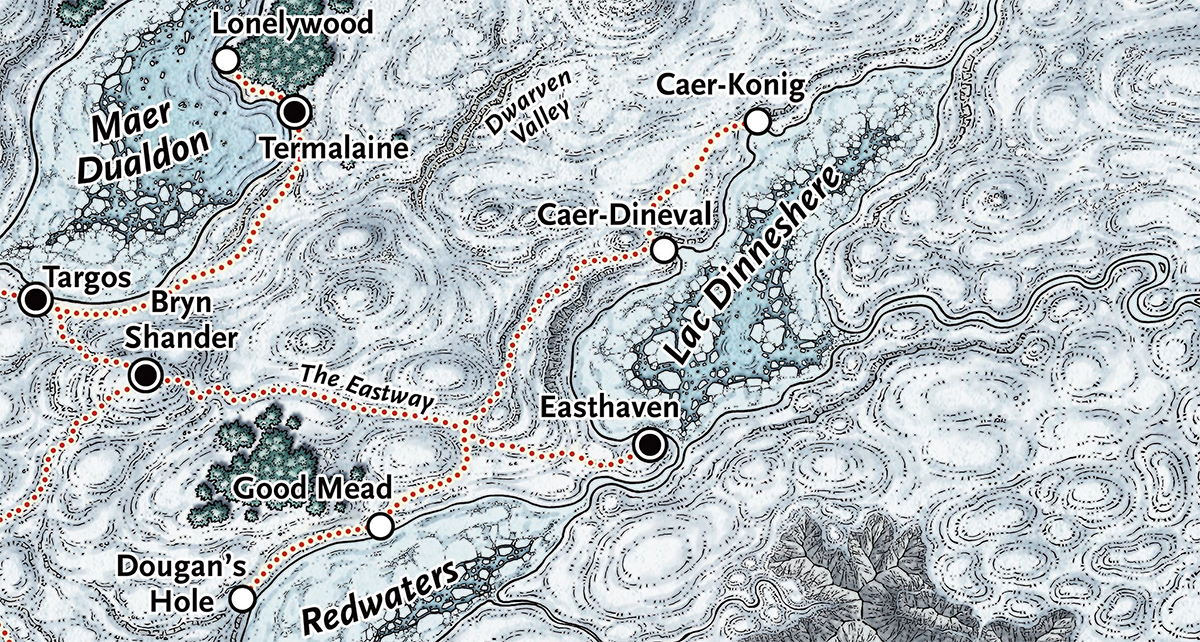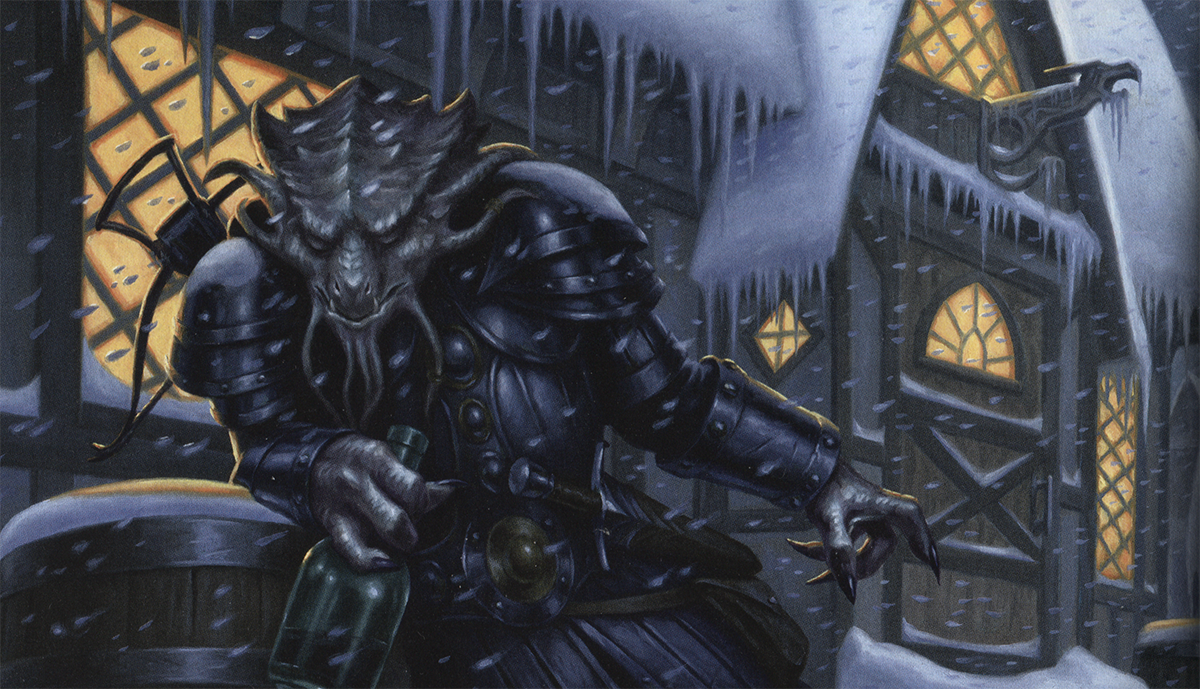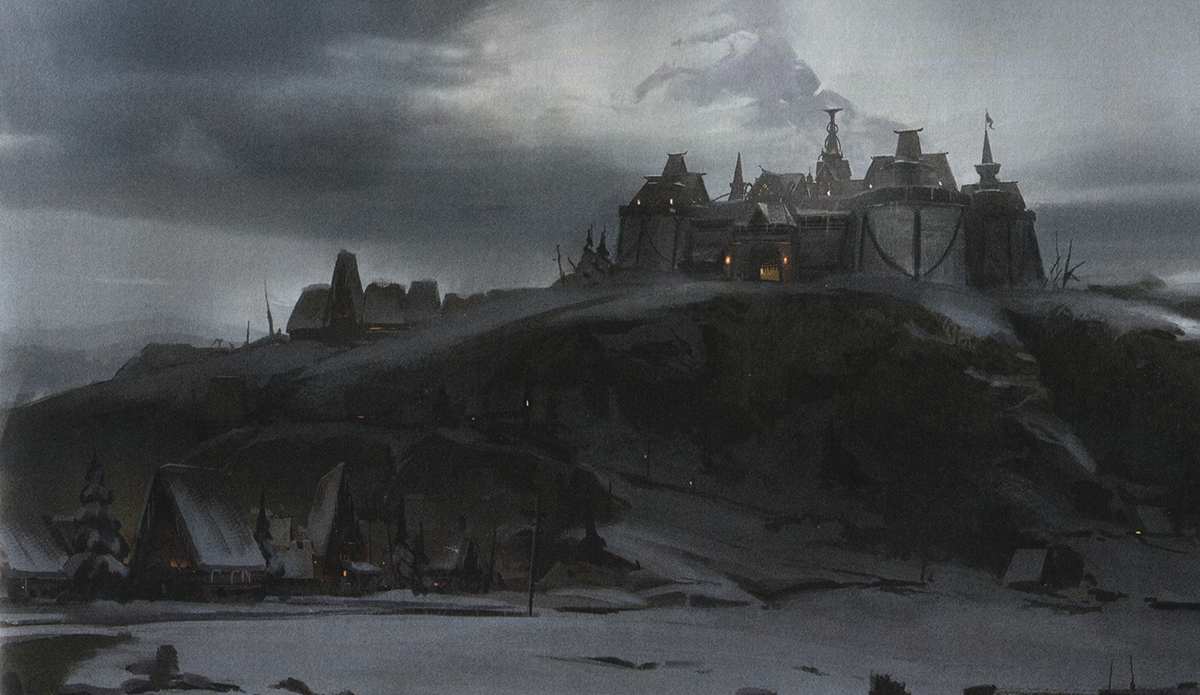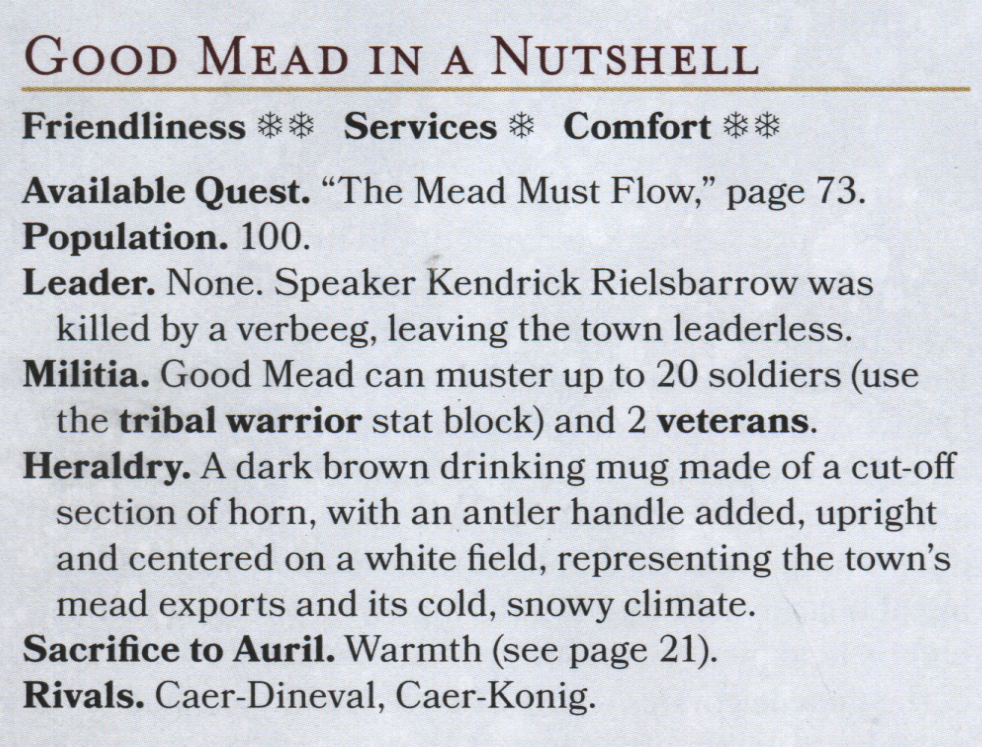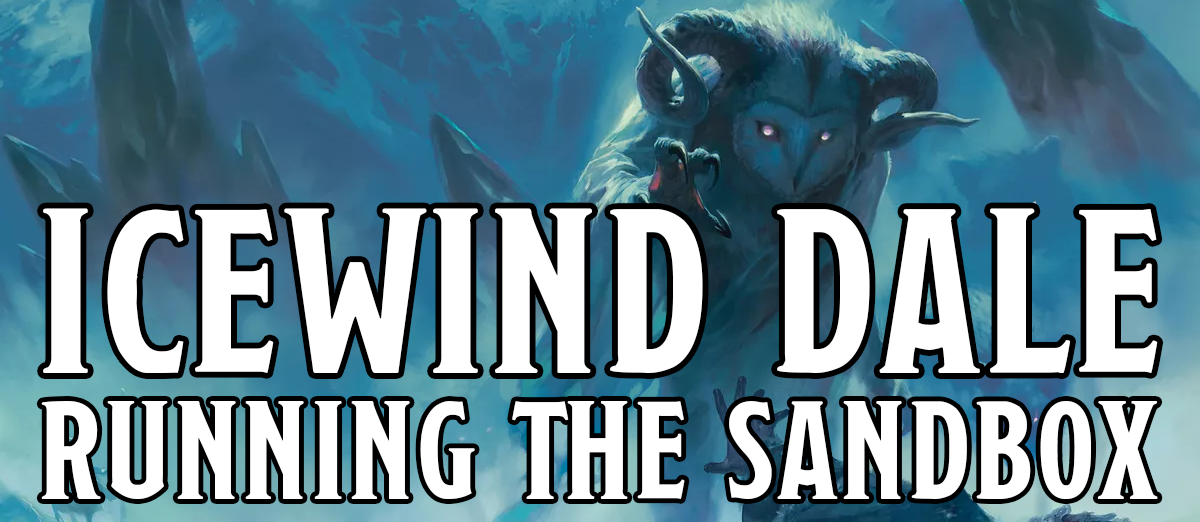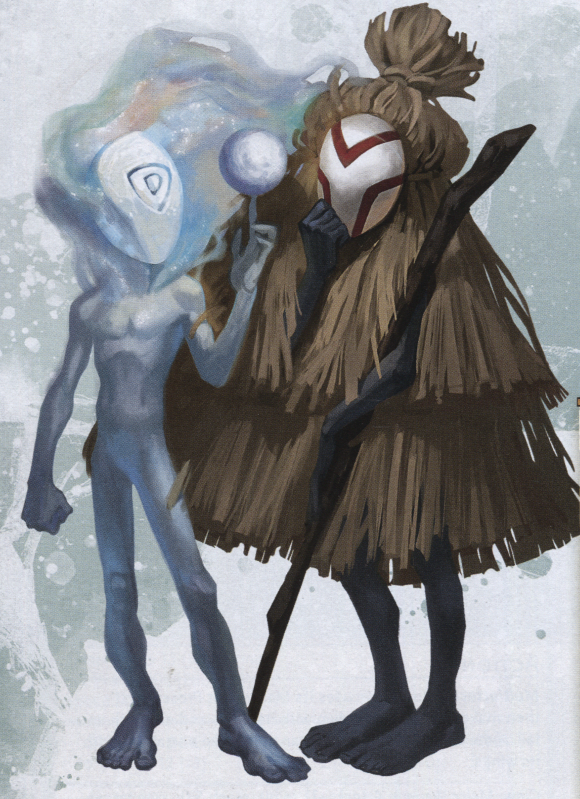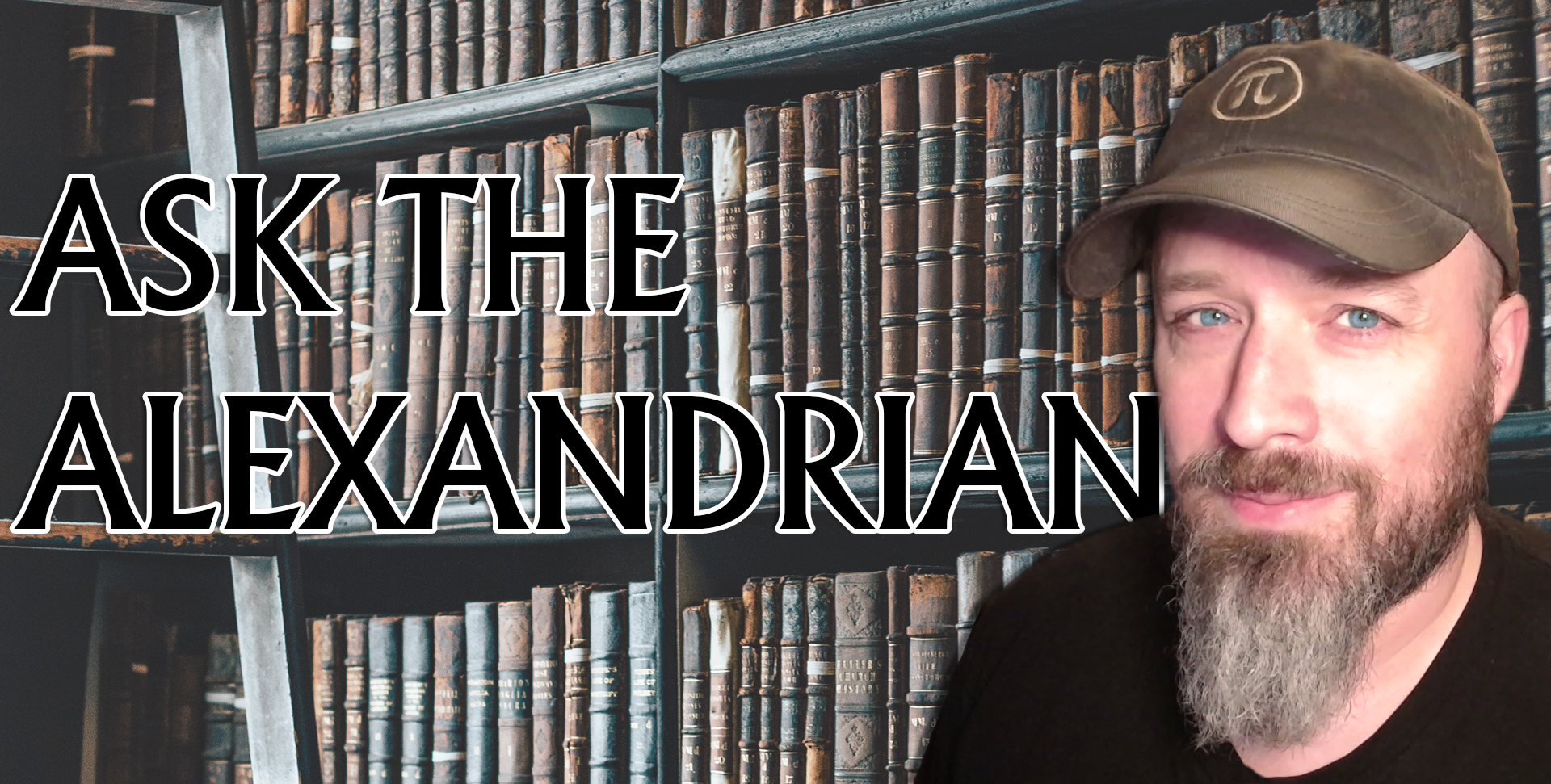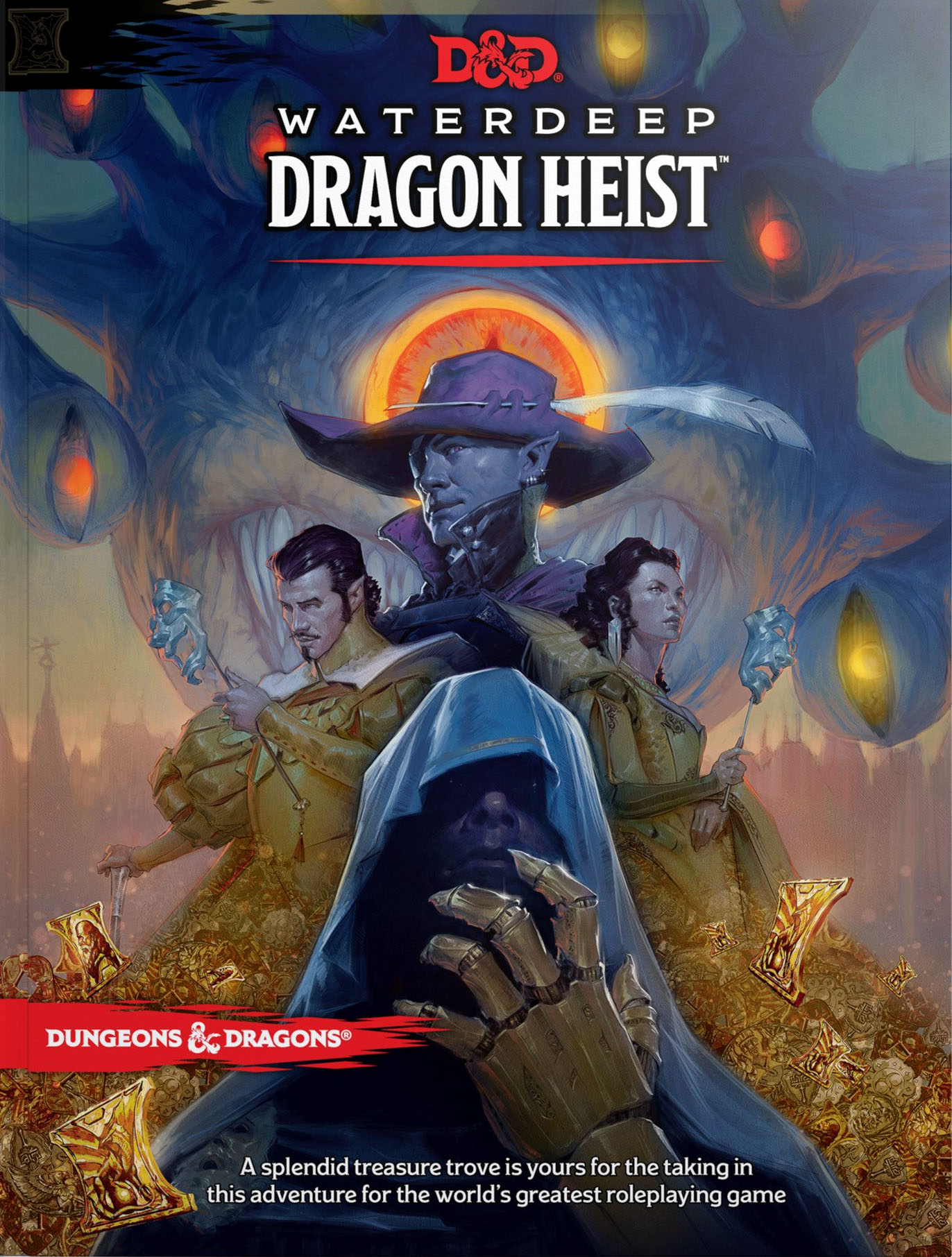Travel times in Icewind Dale: Rime of the Frostmaiden are somewhat confusing and difficult to reference. Due to the harsh winter conditions of the Dale, the normal rules for overland travel in 5th Edition don’t apply. Instead:
The speed that characters can travel across Icewind Dale’s rough, snowy terrain is given in the Overland Travel table. Travel is less time-consuming on the snowy roads and trails that connect the settlements of Ten-Towns, as discussed in Chapter 1.
| Method of Travel | Distance per Hour |
|---|---|
| Dogsled | 1 mile |
| On foot, with snowshoes | 1/2 mile |
| On foot, without snowshoes | 1/4 mile |
If you look up the equipment entry for dogsleds, there’s also this rule:
Sled dogs must take a short rest after pulling a sled for 1 hour; otherwise, they gain one level of exhaustion.
It’s unclear whether this rule is already calculated into the distance per hour for dogsleds given on the Method of Travel table.
The guidelines for road/trail travel in Chapter 1 are not generalized, but are instead presented in sections like this one (for the town of Bremen):
Heavy snow has obliterated the trail that once guided travelers to Targos. Adventurers determined to make the journey on foot can reach Targos in 2 hours. Using mounts or dogsleds can reduce this travel time by as much as 50 percent.
No specific speed for road travel is given, but if you run the numbers they tend to land somewhere between 1.25 and 2.25 miles per hour.
The book also includes incredibly awesome axe beak mounts… but neglects to give a speed for them.
RECOMMENDED TRAVEL RULES
| Method of Travel | Mountains (Distance per Hour) | Tundra (Distance per Hour) | Road (Distance per Hour) |
|---|---|---|---|
| Dogsled | 1/2 mile | 1 mile | 4 miles |
| Axe Beak | 1/2 mile | 1 mile | 2 miles |
| On foot, with snowshoes | 1/4 mile | 1/2 mile | 2 miles |
| On foot, without snowshoes | 1/8 mile | 1/4 mile | 2 miles |
Dogsleds: These rules assume that dogsleds increase their speed in the same ratio as humans do on the roads. These travel times include 1 hour of rest for every hour of travel. Double the speed if the dogs are not being given rest, but they suffer 1 level of exhaustion per hour (which means after the second hour of being pushed their speed will be halved).
Axe Beaks: I’ve arbitrarily decided they move very well through snow or across trackless tundra, but perform like a normal mount on roads (traveling at the same speed as a humanoid). On roads, this means axe beak mounts can gallop at 6 miles per hour, but at the cost of suffering 2 levels of exhaustion per hour. (This means that after the first hour of a gallop, their speed will be halved.)
On Foot: Snowshoes don’t help on roads.
OPTIONAL: TRAVEL PACE
In modifying the rules for overland travel, Icewind Dale: Rime of the Frostmaiden doesn’t specify how travel pace should be handled. If you assume the table above lists a Normal pace of travel, you can use the table below to calculate Fast and Slow paces.
Fast Pace: -5 penalty to passive Wisdom (Perception) scores
Slow Pace: Able to use Stealth
| Slow Pace | Normal Pace | Fast Pace |
|---|---|---|
| 1/8 mile | 1/4 mile | 1/2 mile |
| 1/4 mile | 1/2 mile | 1 mile |
| 1/2 mile | 1 mile | 1 1/2 miles |
| 1 mile | 2 miles | 3 miles |
| 2 miles | 4 miles | 6 miles |
Design Note: The comparison between dogsleds under snowy conditions and horses under normal conditions gets wonky. This is because Icewind Dale reduces human speed by two-thirds, but then has dogsleds moving at twice that speed. The net result is that you end up with dogs in snow being faster than horses on open ground. However, my research indicates these values are broadly accurate for how dogsleds perform in the real world, so I’m going to let the book values stand.
OPTIONAL RULE: DETERIORATING ROADS
Although the roads between the settlements of Ten-Towns are still kept open and trade is mostly uninterrupted, the Frostmaiden’s eternal winter has pushed the region’s infrastructure to the breaking point. Drifting snow and frequent blizzards can effectively obliterate the road between two towns.
There is a 1 in 6 chance of encountering an obliterated road (check for each section of the road).
It is still possible to follow the track of an obliterated road (due to tall waymarker posts that still manage to rise above the ever-growing snowpack), but characters on an obliterated road cannot travel faster than Slow Pace. Furthermore, the group’s navigator must make a DC 12 Wisdom (Survival) check each hour or veer off the road.
If the check fails, the party wanders off course and gets no closer to their destination in that hour. It takes an additional check to find the road again, with each failure costing the group an additional hour.
REFERENCE TOOLS
I also thought it would be useful to compile the travel data into some easy-to-use references, which you’ll find below.
MAP: TRAVEL TIME
This map compiles the travel times given in each town’s entry in the Rime of the Frostmaiden. It turns out, however, that these values are inconsistent with each other along the Eastway. They’ve been adjusted for consistency here (which, of course, means that some of these values will be slightly out of sync with the book).
Note: The path between Bremen and Targos has been “obliterated,” which appears to roughly double what would otherwise be the travel time between these towns. If you’re using the optional rules for deteriorating roads, you’ll want to take this into account.
MAP: TRAVEL DISTANCE
This map lists the distance in miles between each settlement. These distances are calculated directly from the poster map that comes with the book, using the included scale and following the precise path of the trail/road indicated.
(Technically I used the D&D Beyond version of the map, and then used Adobe Illustrator to trace each path and then precisely calculate its length.)
If you calculate the travel times from the distances given here, you will not end up with the travel times given Travel Time Map. This is because the travel times given in the book are all radically inconsistent: Routes are referred to indiscriminately as roads, trails, or paths. Some routes are referred to as being blocked or obliterated. But none of these descriptions have any relation, as far as I can tell, to the variances in travel time given.
ICEWIND DALE TRAVEL SPREADSHEET
You can download an Excel spreadsheet with Icewind Dale travel information here. It contains the following sheets:
- Rounded Distance: As noted above, I calculated precise distances from the original map. This sheet rounds those distances to the nearest half mile.
- Travel Time (Foot): This sheet has the travel time in hours between all ten towns. These values are calculated using the values on the Rounded Distance sheet and the recommended travel rules above (not the time values given in the book).
- Travel Time (Dogsled): Same thing, but for dogsleds.
- Travel Time (Dogsled – No Rest): Same thing, but this assumes the party is pushing their mush team to the limits without any rest. These values have been manually adjusted where necessary to reflect that the speed of the dogs’ becomes halved after two hours due to exhaustion. Some journeys will kill the dogs if they are not allowed to rest, and this is also indicated.
- Raw Distance Data: This is the original, raw distance data as directly measured from the original map. It’s included mainly as a curiosity here.
All of these tables include an entry for “Intersection,” which is the intersection between the Eastway and the north-south road running from Dougan’s Hole to Caer-Konig.





